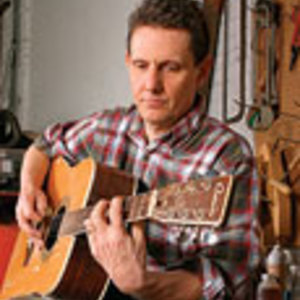Stripping Finishes the Right Way
Choose the chemical best suited for the finish you want to remove
Synopsis: Stripping a finish can be bearable and efficient if you use the right solvent, says Jeff Jewitt. First, evaluate the finish you want to remove by testing with solvents that help identify a clear finish by a process of elimination. Then match the stripper to the job at hand. Jewitt breaks the options into five categories: methylene chloride; methanol, acetone, toluene; n-methyl pyrrolidone; dibasic esters; and lye. He discusses safety tips for using these solvents. There’s also a side article on how Jewitt removed paint from an old piano bench using four different chemical strippers, to see which worked best. Before and after photos document the test.
Stripping furniture is not one of the more pleasant tasks in finishing. But the lure of finding spectacular wood buried under layers of finish remains strong, so some folks jump right into it, only to find more work than they imagined. As a result, the project often gets postponed or taken to a pro to finish the job. I’m not going to tell you that stripping a finish is fun or easy, but the process can be made bearable and efficient. To strip furniture effectively, after you determine the type of finish that you have to take off, it helps to know which stripper will work best for the finish you want to remove.
Evaluate the finish
A simple series of tests with solvents will help you identify a clear finish by a process of elimination. Keep in mind that furniture that was painted was also often topcoated with shellac or varnish. Start by placing a small puddle of denatured alcohol on a horizontal surface and wait a couple of minutes. Then dab a piece of facial tissue into the puddle. If the tissue sticks, the finish is shellac (which can be removed easily with almost any stripper). If the tissue doesn’t stick, repeat the same test using lacquer thinner. If the tissue sticks, the finish is probably nitrocellulose lacquer. If neither alcohol nor lacquer thinner softens the finish enough for the tissue to stick to it, chances are the finish is a varnish.
Match the stripper to the job at hand
The strippers available on the retail market can be divided into five categories, based on the chemicals they contain. Manufacturers must list chemical components that are hazardous, so consumers can know exactly what they are buying. As a general rule, the level of hazard to you is an indicator of how efficient the stripper is, meaning how quickly it will work to remove a finish. And if you have to strip the finish from vertical surfaces, a paste or gel will stay put longer than a runny liquid will.
Methylene chloride—Methylene chloride has been the main ingredient in strippers for decades. It is the fastest and most efficient stripper at removing all types of finishes. Two big advantages are that methylene chloride is nonflammable and works from the bottom up, meaning that it penetrates and swells the finish until it breaks free at the surface of the wood and comes off easily. However, there is a downside: Methylene chloride is a suspected carcinogen, and it evaporates very quickly, causing a rapid buildup of the vapors that affect the body’s supply of oxygen. For that reason, people with heart problems are especially sensitive to such exposures and should not use methylenechloride strippers.
From Fine Woodworking #138
For the full article, download the PDF below:
Fine Woodworking Recommended Products

Bumblechutes Bee’Nooba Wax

Bahco 6-Inch Card Scraper























Log in or create an account to post a comment.
Sign up Log in